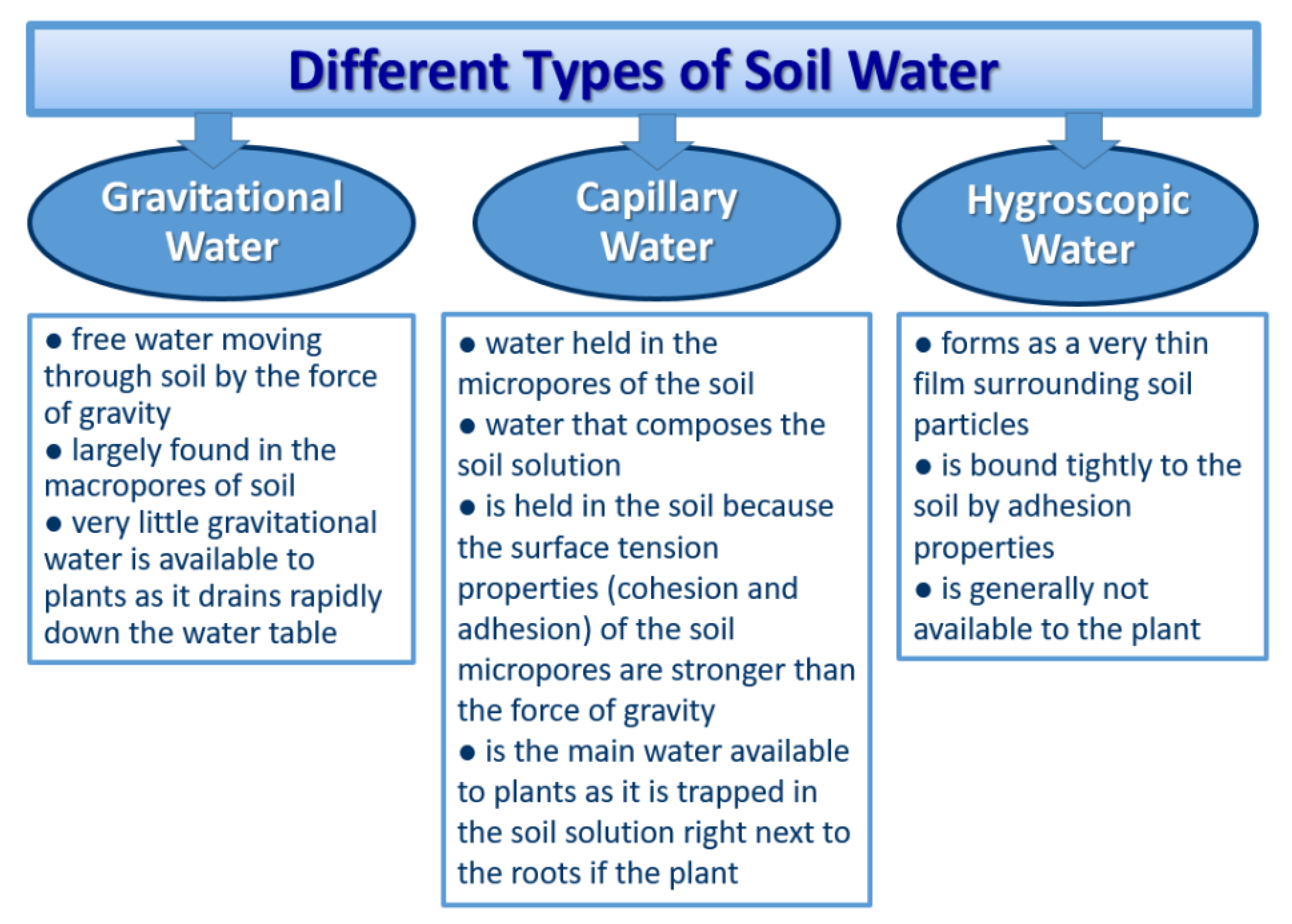
Water Free FullText Water, Soil, and Plants Interactions in a Threatened Environment
Hydrophilic and hygroscopic are two terms used to describe substances that have an affinity for water. However, there is a subtle difference between the two. Hydrophilic substances have a strong attraction to water molecules and can easily mix or dissolve in water. They are capable of absorbing water and dispersing it throughout their structure.
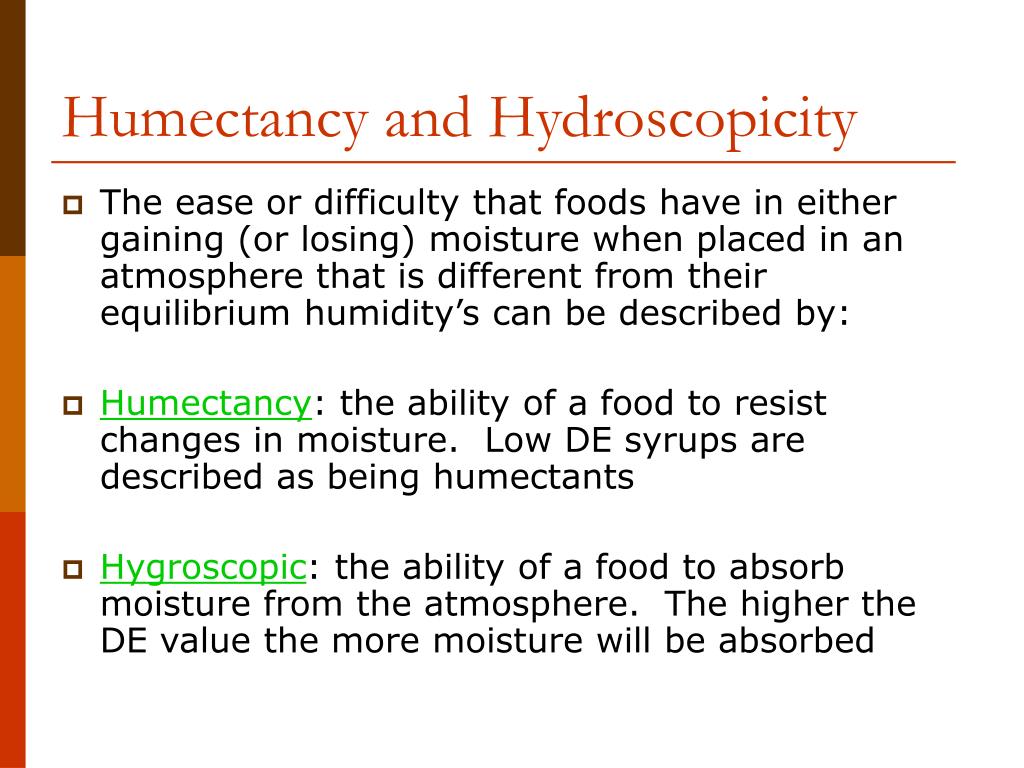
PPT Sugar Technology PowerPoint Presentation, free download ID3709298
Hygroscopic means capable of attracting and holding water from environment, either through absorption or adsorption. Typically, this process occurs near ambient or room temperature. Hygroscopy is the ability to attract and hold water.

A Simple Way of Hygroscopic Testing for Humidity Science
1 Hygroscopicity is measure of how much the molecule likes to bond molecules of water, by hydrating/covering charged part of the molecule with molecule/s of water, which relates to it having some polar or charged functional groups, like hydroxyl group for phenols.

Hygroscopic Vs Hydroscopic Moisture Absorption Clearified!
Resins moved from storage to the molding machine often must be dried because of these properties. They must be processed quickly after drying. Nylon 6 is one of the more hygroscopic resins and is.
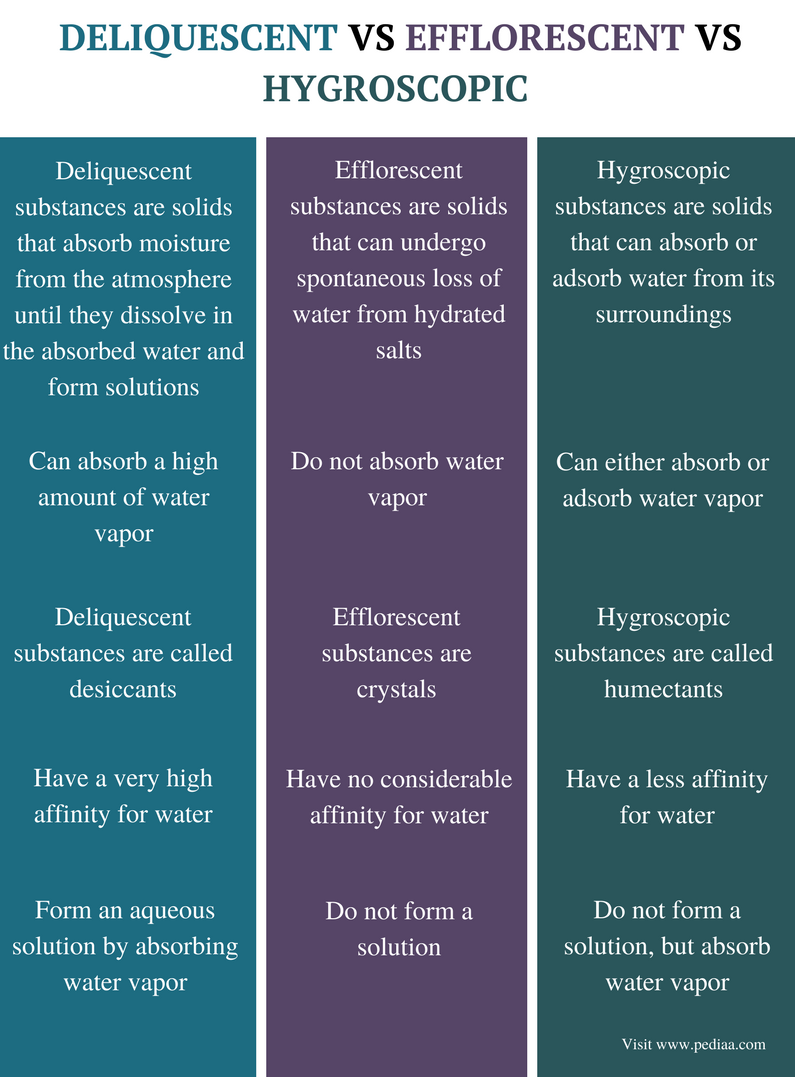
Difference Between Deliquescent Efflorescent and Hygroscopic
April 17, 2023 by Ozil Hygroscopic vs Hydroscopic: What's the Difference? When it comes to materials science and engineering, the terms "hygroscopic" and "hydroscopic" are often used interchangeably. However, there is a subtle difference between them that can impact the performance and effectiveness of a material in various applications.

Hygroscopic Definition and Examples
What Is The Difference Between Hydroscopic And Hygroscopic? (Deep Dive) - All The Differences Is 'Hydroscopic' A Word? What Is The Difference Between Hydroscopic And Hygroscopic? (Deep Dive) Sayings When it comes to hydroscopic and hygroscopic, people use both words interchangeably.
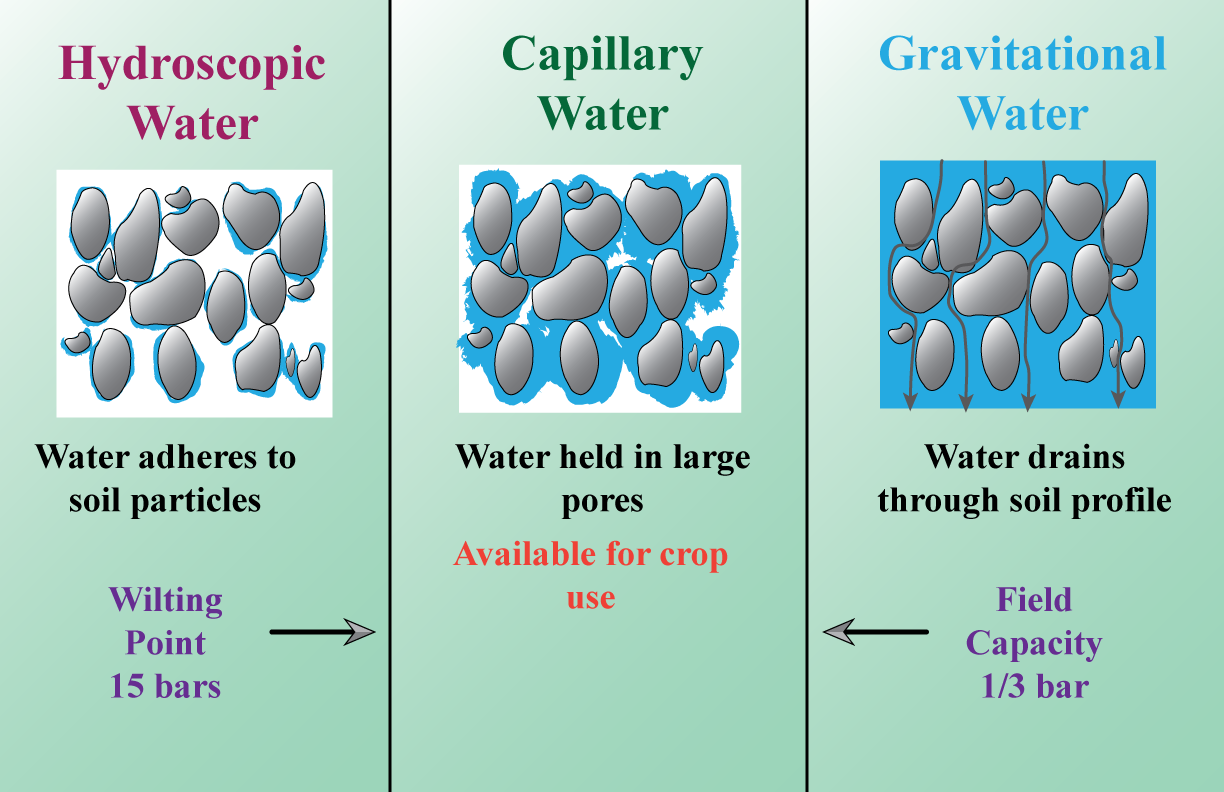
Differentiate between Hygroscopic water and capillary water.
Hydroscopic materials are those that have the ability to absorb water. Unlike hygroscopic materials, which absorb moisture from the air, hydroscopic materials absorb water directly. Examples of hydroscopic materials include cotton, wood, and some types of plastics. The ability to absorb water can have both positive and negative effects on these.

Hygroscopic water YouTube
Hygroscopic vs. Non-Hygroscopic Resins What does hygroscopic mean, and how does it affect resin moisture retention and drying? Hygroscopic Resins (i.e., Nylon, ABS, Acrylic, Polyurethane, Polycarbonate, PET, PBT,) Have a strong affinity to attract moisture Will absorb moisture onto their molecular structure if exposed to ambient air

Hygroscopic Vs Hydroscopic Moisture Absorption Clearified!
Hygroscopicity, Hygroscopic Constant. Hygroscopicity is the property of small‐particle systems to take up moisture from the atmosphere (Gregorich et al., 2001) through strong sorption forces on the particle surfaces and through capillary condensation due to the lowering of the watervapor pressure above concave capillary menisci.

PPT Soil Water PowerPoint Presentation, free download ID6408324
Hygroscopic − R efers to the ability of a material to absorb humidity from the air. A hygroscopic substance will actively attract and absorb water, without bonding. (A hygroscope is an instrument that indicates changes in humidity.)

PPT Biology Biochemistry Unit Chapter 2 The Chemistry of Life PowerPoint Presentation ID5256630
What's the Difference Between Hygroscopic and Hydrophobic Materials? This article was authored by: Jenny Seim Technical Writer Simply stated, hygroscopic materials absorb moisture, whereas hydrophobic materials do not absorb moisture from the environment.
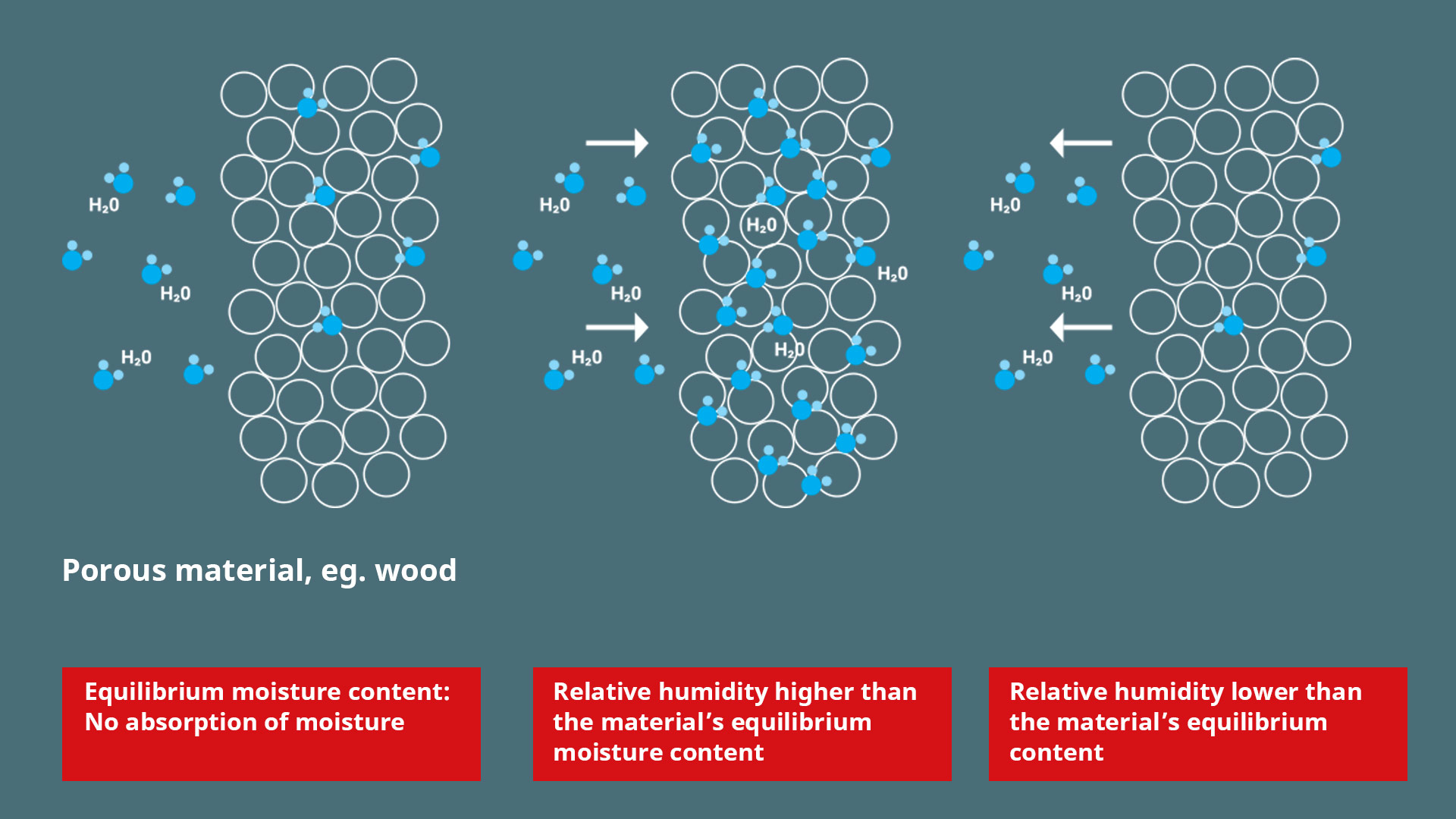
Avoid unwanted dessication of products and raw materials
The main difference between hydroscopic and hygroscopic materials is their capacity to absorb moisture. Hydroscopic materials can absorb water from the atmosphere in any physical form, while hygroscopic materials can only absorb moisture in its gaseous form. Understanding the Importance of Hygroscopic and Hydroscopic Materials

Thermal and hygroscopic actuation mechanisms of STPAs and TCPAs. Download Scientific Diagram
There is a device for taking pictures underwater called a hydroscope, hence the correct spelling of the word hydroscopic. Glycerin-rich soaps are HYGROSCOPIC. I, myself have made the error of using the prefix, "hydro-" when talking and writing. So, both words are REAL but only one means, "attracts water".
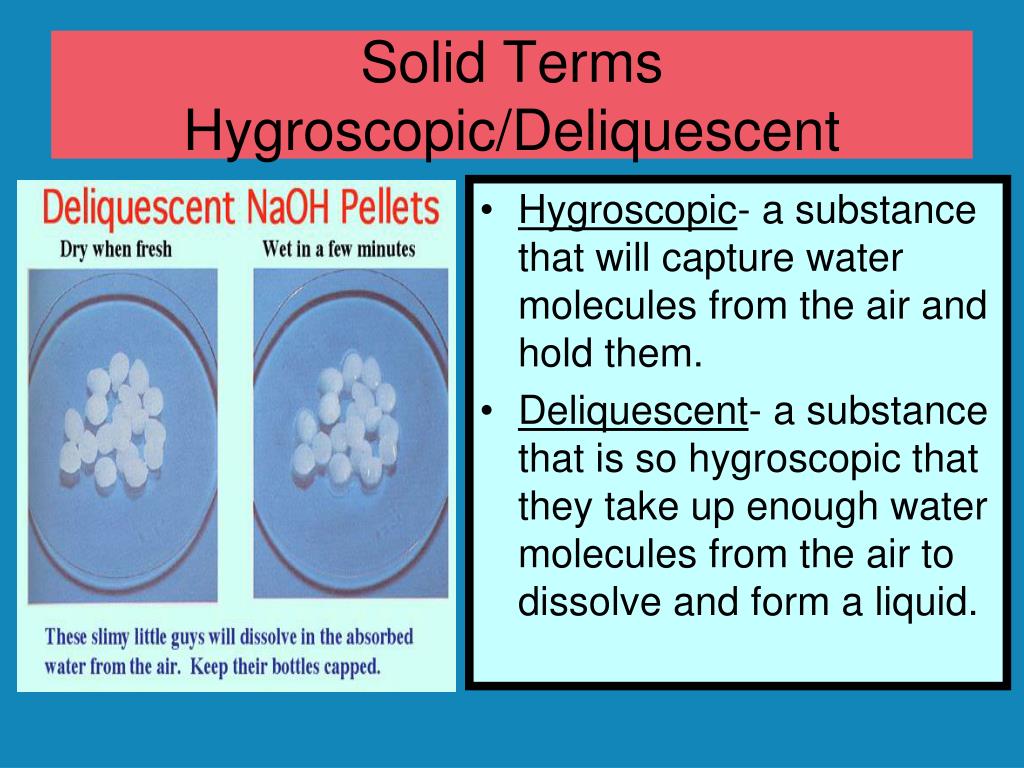
PPT Chapter 10 Liquids and Solids PowerPoint Presentation, free download ID5888387
By Abhishek The terms hygroscopic and hydroscopic may sound similar but their meanings completely differ from one another. Hygroscopic substance refers to the substance that can take and hold moisture from the surroundings. Hydroscope is an instrument used to see objects deep underwater.
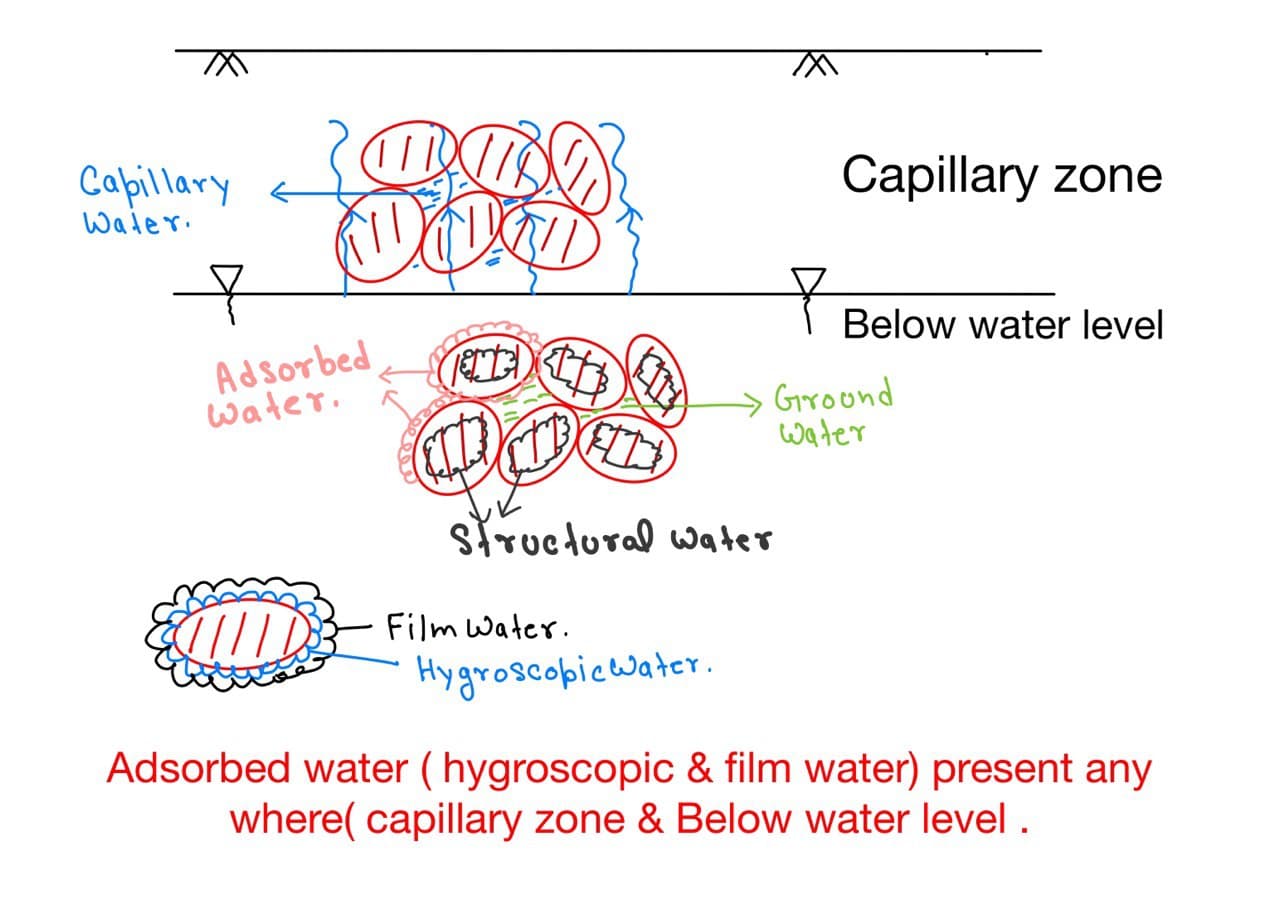
Soil Water & Types Of Soil Water Properties Of Soil Soil Mechanics
The Hygroscopic Coefficient is the condition when the last micro pore is drained of water and only films of water exist surrounding the soil particles. Soil dried at 105°C to a constant weight is considered oven dry. The oven dry weight of soil is used as the reference weight to quantify the amount of water in mineral soils for all moisture.
Schematic illustration of the hygroscopic mechanism of CSNT particles... Download Scientific
"Hygroscopic" and "Hydroscopic" are two terms that can easily be confused due to their phonetic similarities. However, only "Hygroscopic" is the scientifically accepted term, denoting a substance's ability to attract and hold water molecules from the surrounding environment. This property is vital in many industrial and scientific applications.